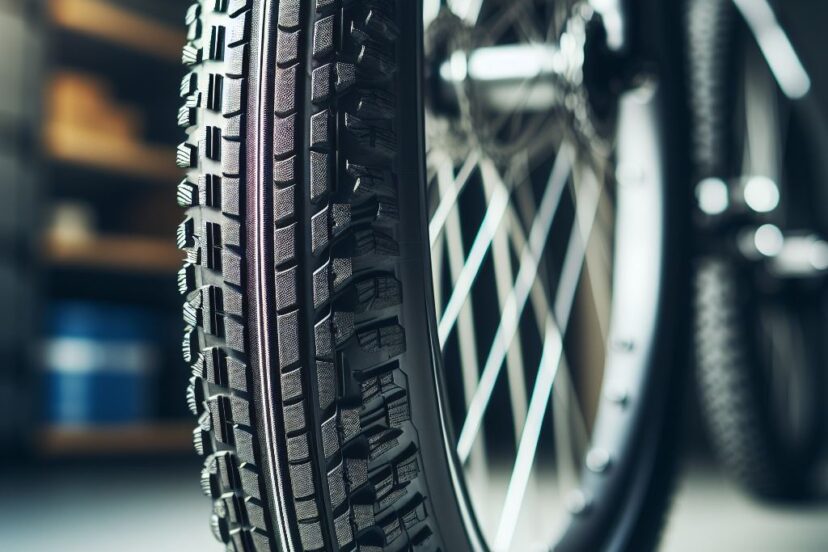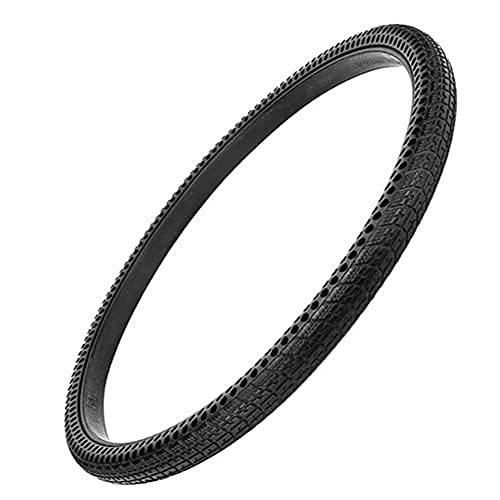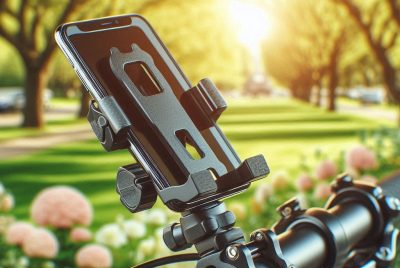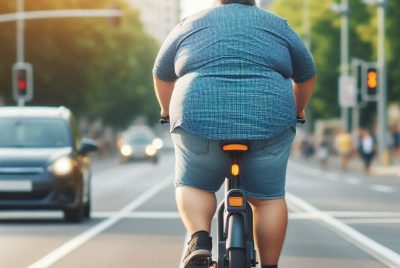Airless Bike Tires: Revolutionizing Cycling
*We may earn a commission for purchases made using our links. Please see our disclosure to learn more.
Airless Bike Tires: Revolutionizing the Cycling Experience
Cycling offers a fantastic blend of fitness, utility, and environmental friendliness, but common hindrances like tire punctures can make it less appealing. Airless bike tires, or solid tires, stand out in the cycling world by providing a solution to this issue. Unlike traditional pneumatic tires that can deflate, airless tires are made of a solid material, such as foam or rubber, which makes them immune to flats.
While solid tires have been around in some shape or form for years, recent advancements in materials and design have improved their performance significantly. Cyclists, particularly urban riders and those tired of dealing with flats, may find airless tires an increasingly viable option. They’re built to be durable and require minimal maintenance, attributes that make them an attractive alternative to their air-filled counterparts.
When considering airless bike tires, it’s essential to focus on the tire’s material, compatibility with your bike, riding experience, and the kind of terrain you’ll be navigating. The right tire should support your bike’s handling and not compromise on comfort. Some riders might prioritize durability and longevity, while others might value a closer feel to traditional pneumatic tires.
I examined various airless bike tires to evaluate which models best combine ease of installation, ride quality, and durability. This quest involved countless hours cycling through urban environments and rough terrains to ensure the tires held up and performed as advertised.
Top Airless Bike Tires
After meticulous research and thorough evaluation, I’ve curated a list of the top airless bike tires that are currently available on the market. Each of these products has been chosen based on their durability, performance, and customer satisfaction records. Whether you’re a daily commuter or an occasional rider, my selection aims to cater to a variety of needs, ensuring that flat tires are a worry of the past.
Stop-A-Flat Inner Tube
I’d recommend this for riders tired of dealing with punctures, as the convenience outweighs the minor drawbacks.
Pros
- No more flats, which saves both money and time on repairs
- Easy to install with proper tools and a bit of elbow grease
- Versatility across various wheeled vehicles increases their value
Cons
- Installing them can be tough and may require professional help
- Heavier than regular inner tubes; affects the ride quality
- May not fit all bicycles, so compatibility checks are essential
Upon my first ride with the Stop-A-Flat Inner Tube, the peace of mind was instant. Not once did I worry about running over thorns or debris, a stark contrast to the standard tubes that seemed to attract punctures like magnets. The initial investment here definitely pays off as I’ve ridden countless miles without the need to carry a repair kit or pump.
The difference in weight was noticeable, though. My bike felt a tad heavier, particularly on inclines, but it’s a small price to pay for durability. For commuters or casual riders, this trade-off might not even be a concern, but enthusiasts looking for performance should take heed.
I had my local bike shop fit these, and from watching the process, I was grateful for the decision. It seemed like wrestling a bear to get them in place, but once installed, they sat snugly within the rims. Before you buy, make sure to check if these will fit your bike to avoid any compatibility headaches.
Catazer Airless Tires
As a frequent cyclist, I believe these Catazer airless tires are a smart investment for those worn out by constant flats, though they demand some trade-offs in ride quality.
Pros
- Say goodbye to punctures and the need for patch kits or pumps.
- Ideal for rough terrains where thorns and sharp rocks are common.
- Durability surpasses traditional pneumatic tires.
Cons
- Noticeable increase in rolling resistance, making pedaling harder.
- Challenging to install; the technique requires some practice.
- Can trap water, which might add weight and affect the ride.
After putting the Catazer airless tires through their paces on my mountain bike, I found peace of mind knowing that punctures were off the table. This feature alone is a huge relief for riders like me who encounter debris-strewn trails.
The durability is impressive. I’ve ridden them over shards and thorny paths where my old tires would’ve surrendered. These tires took it all in stride. However, I quickly noticed I was exerting more effort when pedaling, especially on inclines.
Applications where flat tires are the bane of your existence, this product shines. But if you’re all about performance and efficiency, you might have to weigh your options. The rolling resistance can be a deal-breaker for speed enthusiasts.
Installation was the main hurdle. Heeding the advice, I soaked them in hot water, which made the process slightly more straightforward, but it still wasn’t a walk in the park. Be prepared for a bit of a struggle or get them professionally fitted. Once on, the sturdy feel of the ride was reassuring.
Encountering water with these tires can be tricky as they tend to hold moisture. After riding through a few puddles, I sensed the added weight. Therefore, checking and draining any liquid becomes an additional maintenance step.
In conclusion, if your main concern is avoiding flats at all costs, these Catazer airless tires are a robust solution. For high-performance riders, consider how these tires will change your riding experience. The trade-off might be worth it or might steer you back to conventional tires.
BAIBIKING Solid Tire
I believe these airless tires are a practical choice for anyone tired of dealing with flats, prioritizing durability and convenience on urban rides.
Pros
- Immune to punctures, offering peace of mind on debris-strewn paths
- Maintenance-free, with no need for inflation
- Simple to install after heating, making them a user-friendly option
Cons
- Potentially challenging to fit onto the rim, requiring patience and strength
- Slightly stiffer ride than traditional tires, which may affect comfort
- Possibly reduced traction compared to pneumatics on slippery surfaces
Riding through the city streets, the BAIBIKING Solid Tire provides a sense of reliability which is quite reassuring. The absence of air means goodbye to unexpected punctures, a common annoyance when navigating urban terrain littered with hazards. The ride feels secure, and day-to-day use is wonderfully uncomplicated without the regular air pressure checks.
The installation process gave me a small workout. Heeding the advice from others, I softened the rubber in warm water before attempting to lever them onto the rim. This step is crucial; skipping it would have led to a frustrating installation process. But once on, the tire sat snug and secure, ready for action without requiring any additional adjustments.
Acknowledging that these tires offer a firmer feel compared to their inflated counterparts is important. The ride is noticeably stiffer, which can be felt on rougher patches of road. It’s a trade-off – exchanging some comfort for durability and convenience. For my urban commutes and errands, this has been a trade worth making.
While they perform adequately on dry streets, I noticed the tires were a bit less grippy during wet conditions. Caution is advisable when taking corners or navigating slick surfaces. It’s a sensible adaptation period for a rider transitioning from traditional tires to these solid alternatives.
Catazer 26″ Airless Tire
I’d recommend these tires for urban riders who prioritize maintenance-free cycling but be mindful of the fitting challenges.
Pros
- Puncture-proof design enhances reliability
- Eco-friendly rubber material conscious of health and environment
- Honeycomb technology provides effective shock absorption
Cons
- May encounter issues with fitting standard rims
- Limited suitability for variable terrain
- Potential installation difficulties without professional equipment
Cruising through the city streets on my bike used to be punctuated by the occasional groan of discovering a flat tire. That all changed when I switched to the Catazer 26″ Airless Tires. The solid construction means I no longer have to carry a pump or patch kit, and I can confidently ride without the worry of punctures. These are a godsend for urban commuting.
However, I must admit I was a tad frustrated during the installation. Getting these tires onto the rim was more of a workout than my usual cycling session. I’ve heard soaking them in hot water can ease the process, and some elbow grease eventually did the trick. Once installed, though, it’s a smooth ride from there.
Considering the environment while enjoying your ride is a plus, and these tires are made of a non-toxic rubber, so I feel good about that choice. Although they are quite adept on well-maintained roads, I wouldn’t venture onto rough trails. They’re best suited for city bikers who stick to smoother paths. The durability seems promising, mitigating wear and tear through many urban adventures.
BAIBIKING Airless Tire
I recommend these tires for those seeking a durable, maintenance-free riding experience.
Pros
- Eliminates the need for tire inflation.
- Resistant to punctures, enhancing reliability.
- Simplified installation process.
Cons
- Limited to specific rim sizes.
- Installation may require additional tools or techniques.
- Potentially less cushioning than traditional tires.
The BAIBIKING Airless Tire offers the convenience of never having to check air pressure or deal with flats on my rides. I recently swapped out traditional tires on my son’s bike with this model, and I’ve been impressed by the resilience. Riding over rough terrain became less of a worry, with no more interruptions to patch up punctures.
Installation was straightforward, but some might find it requires a bit of muscle or the use of soap as a lubricant. Make sure to follow the instructions and maybe even warm up the tires for a more malleable fit onto the rims. Once they’re on, the peace of mind is remarkable.
Despite these perks, it’s important to note that the ride quality is firmer compared to air-filled tires. The shock absorption is not on par with pneumatic options, but for urban commuting or casual rides where durability trumps comfort, these BAIBIKING tires stand out as trusty companions.
In conclusion, if you have the right rim size and value a hassle-free, puncture-proof experience, the BAIBIKING Airless Tire could be an excellent choice for your biking needs.
Buying Guide
Assessing Quality and Durability
When I look for airless bike tires, I focus on quality and durability. Good airless tires are made from high-grade materials, like polymer compounds, that can withstand road debris and wear.
- Tread Pattern: Examine the tread pattern; it should provide good grip in various weather conditions.
- Material Strength: The tire should feel robust, resistant to punctures, and maintain its shape over time.
Compatibility with Your Bike
I ensure the airless tires are compatible with my bike’s make and model.
- Wheel Size: Match the tire size with your wheel’s diameter and width specifications.
- Rim Type: Check the tire’s compatibility with your bike’s rim type—some are designed for specific rims.
Rider Experience
Considering the riding experience, airless tires change the feel of the ride.
- Cushioning Effect: While they don’t offer the same cushioning as pneumatic tires, high-quality airless tires can still ensure a comfortable ride.
- Handling: Note how the tire’s design might affect the bike handling, especially during turns.
| Feature | What to Look For |
| Tread Pattern | Offers grip and channels water |
| Material | High-grade, puncture-resistant |
| Compatibility | Correct size and rim fit |
| Ride Comfort | Adequate cushioning and handling |
Installation and Maintenance
I check the ease of installation and the required maintenance of the airless tires.
- Installation Requirements: Some airless tires can be more challenging to install compared to traditional tires.
- Maintenance: I look for tires that require minimal maintenance, ensuring more time can be spent riding.
Remembering these aspects helps me choose the best airless bike tires that suit my cycling needs and preferences without the worry of flats.
Frequently Asked Questions
I’ll address some common inquiries regarding airless bicycle tires, covering their benefits, comparison to traditional tires, durability, terrain adaptability, costs, and impact on ride quality.
1. What are the advantages of using airless bicycle tires?
Airless bike tires offer the significant advantage of being puncture-proof, which eliminates the risk of flat tires and the need for frequent maintenance. This reliability makes them an excellent choice for riders who prioritize uninterrupted cycling and minimal upkeep.
2. How do airless tires for bicycles compare to traditional pneumatic tires?
Compared to traditional pneumatic tires, airless tires are heavier and may provide less shock absorption. However, they excel in durability and provide a consistent riding experience without the risk of deflation. Their solid structure is also beneficial for riders who prioritize low maintenance over the potentially smoother ride of air-filled tires.
3. What is the expected durability of airless bike tires?
Airless bike tires are designed for longevity, with many models expected to last the lifetime of the bicycle itself, under normal riding conditions. Their robust composition resists wear and degradation, making them a long-term investment for cyclists.
4. Can airless bike tires be used on any type of terrain?
Airless tires are versatile and can be used on various terrains, including paved roads and moderate off-road trails. However, they may not offer the same level of traction and performance as specialized pneumatic tires in more extreme off-road or competitive riding scenarios.
5. What are the costs associated with switching to airless tires for bikes?
The initial cost of airless bike tires can be higher than traditional tires due to their specialized materials and construction. However, their extended lifespan and absence of maintenance needs can offset the upfront investment over time, making them a cost-effective option for regular riders.
6. How do airless bike tires perform in terms of ride comfort and handling?
Airless tires may feel firmer compared to pneumatic tires, which can affect ride comfort, particularly on rough surfaces. Handling characteristics can vary depending on the design of the airless tire, but they generally provide reliable and consistent performance without the worries of pressure adjustments or flats.









